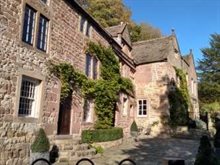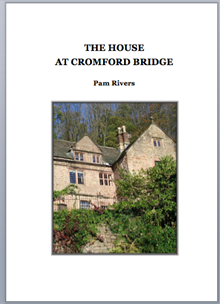
Above: Cromford Bridge House. Photograph by Pam Rivers, 2018 (CC BY-SA 3.0)
Below: Cover of The House at Cromford Bridge, by Pam Rivers (2018)

The house at Cromford bridge has existed in some form since the 1530s, when it belonged to the Wigley family and was known as Senior Field House. It thus significantly predates the pioneering cotton mills of Richard Arkwright, which came to dominate Cromford from the 1770s onwards.
The house came into the Nightingale family orbit in the eighteenth century, when Ann Nightingale (1733-1815) and her husband George Evans purchased it with Ann's dowry on their marriage in 1757. Their daughter, Elizabeth Evans (1762-1852), Florence Nightingale's great aunt, lived there during Florence's youth. Florence would regularly visit the house when staying in Derbyshire.
After the death of Elizabeth Evans in late 1852, Florence's mother Fanny suggested that she convert the now empty house and run it as a nursing home. From her mother's point of view, this would enable Florence to fulfil her nursing ambitions while remaining firmly connected to the wider family. Nightingale turned down the offer, feeling that she was not yet ready to take such a step, and perhaps also not wishing to live permanently in Derbyshire, preferring instead to move to London to run a nursing home in 1853.
Florence Nightingale described the house as
the most perfect of Derbyshire old houses, with its paved terrace and its flight of stone steps overlooking the dashing river with a Virginian Creeper over its roof, which in autumn was a perfect sheet of fire, twisting with a broad-leaved vine in and out of the old mullioned windows, shutting out light as none in these days would be allowed to do uncropped.
[quote from L. McDonald (ed), Florence Nightingale’s European Travels. Collected Works of Florence Nightingale, Vol. 7 (2004), p. 683.]
A history of the house and its occupants has recently been written by its current owner, Pam Rivers. If you would be interested to take a look at this, please contact the project team via nightingale2020@nottingham.ac.uk.